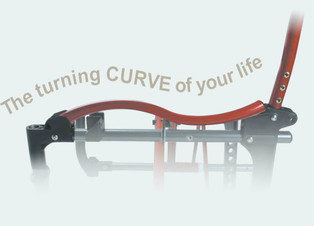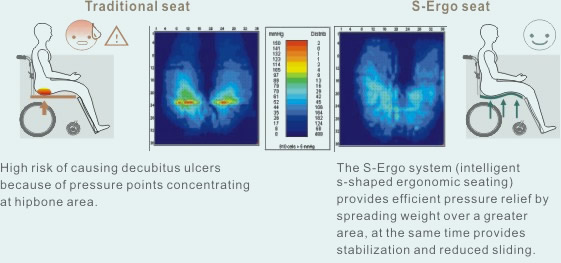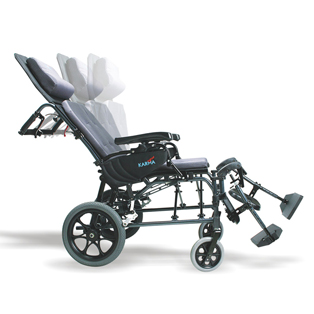- Regular maintenance is very important. Keep the wheelchair in good condition and you will prevent many accidents and malfunctions
- Always lock the brakes before getting in and out of the wheelchair.
- Lift the footplates up before getting in or out of the chair.
- If you have a wheelchair with removable arm or leg rests, make sure they are secure by lifting the arms and gently trying to swing the leg rest away from the chair. Do this before each use.
- Avoid putting heavy loads on the back of a wheelchair. This could cause the chair to tip over backwards.
- Don’t let children play with your wheelchair. They should be instructed to never touch your wheelchair.
- Just be careful and think of ways to prevent problems before they occur. Plan ahead for emergencies such as brake failure or tipping backward.
|
3 Comments
(from www.abena.com)
Urge-incontinence Involuntary urination accompanied by – or immediately preceded by – a strong urge to urinate, which is hard or even impossible to suppress. Symptoms • Frequent urinations around the clock • Often large leakage episodes (bladder is emptying) • Difficult to reach a toilet in time Reason could be • Cystitis • Disorders in abdomen or bladder • Neurological deseases • Thin mucous membrane due to lack of oestrogen • Side effect of other medical treatment Treatment • Treatment of the disorders in abdomen or bladder • Training of the pelvic floor • Bladder training, so that it can contain more urine, before the urge begins • Treatment of cystitis • Medical treatment • Surgical treatment Stress incontinence/strain incontinence Involuntary urination resulting from strain, sneeze or cough. Symptoms • Minor leakage • No urge to urinate coincident with the leakage • Continent during the night Reason • Weak closing function • Weak pelvic floor • Thin mucous membrane due to lack of oestrogen after menopause • Constipation • Overfilled bladder • Overweight and coughing Treatment • Training of the pelvic floor muscles • Regular urination • Adjustment of liquid intake • Treatment of cough, overweight and constipation • Oestrogen treatment • Operation Overflow incontinence Overflow incontinence is not a defined incontinence type but presents as various symptoms, which include the following: • Seeping urination • Weak stream • Frequent urination around the clock • Poor emptying of the bladder • Recurrent cystitis Treatment of the cause • Weakened bladder muscle due to overfilled bladder • Enlarged prostate, which prevents outlet from the bladder • Neurological diseases • Consequences of diabetes • Side effects of medicine Treatment • Regular toiletting regime • Double or triple urination, to empty the bladder properly • Treatment of enlarged prostate • Single-use catheterization • Permanent catheter Faecal incontinence Constipation, diarrhoea and involuntary bowel movement are symptoms,(remove comma) which can occur simultaneously or separately. Faecal leakage episodes indicate problems in the intestinal system, which are often complex and caused by many different factors. The figures are only based on an estimate as faecal problems tend to be seen as much more private than urine incontinence. Approx. 20 % of the Danish population suffer from constipation and approx. 4 % suffer from diarrhoea. There are no Danish figures indicating the frequency of involuntary bowel movements. When comparing the figures from England approx. 4 % of adult Danes will likely suffer from involuntary bowel movements. Help is available from: • Your own doctor • Pharmacy • Medical specialist • The hospital • Anal physiological outpatient clinic with referral from the local hospital • Continence society For more information about our premium products - Abena Adult Diapers, please visit: Assisted Living Home Page Abena Singapore Facebook Fan Page (from www.abena.com)
Facts about Incontinence: What is urinary incontinence? Urinary incontinence is defined as ‘the complaint of any involuntary loss of urine’ (Source: International Continence Society 2005). First of all, incontinence is not a decease, it is a symptom. The field of incontinence is divided into urge-incontinence, stress incontinence, overflow incontinence and faecal incontinence. The different types of incontinence can result in different degrees of leakage. Therefore, continence solutions must always begin with a wide range of different products and efforts to perfectly suited for individual needs. This is the reason why Abena focuses on ‘Continence Management’ as opposed to stand-alone continence products. How many is incontinent? Incontinence is a fact of life for people in all ages, but frequency tends to get higher as we get older. For people over 63 years, there are no differences in frequency for men and women. In nursing homes the frequency for incontinence is 50%. With the right approach 70% can improve their situation or get completely rid of their incontinence. Get more information about our premium products - Abena Adult Diapers over: Assisted Living Home Page Abena Singapore Facebook Fan Page Abena Adult Diapers Blog Locking the Wheels
You can never attempt to get into or out of the wheelchair without securely locking the brakes first. To lock the wheelchair, push the brake levers forward or pull them backwards, depends on the type of brake used on your wheelchair. Make sure the both side of locks are in secure position. From http://www.karmamedical.com
Bedsore—the unbearable pain of wheelchair users Bedsores, more accurately called pressure sores or pressure ulcers, are areas of damaged skin and tissue that develop when sustained pressure cuts off circulation to vulnerable parts of one’s body, especially skin on the buttocks, hips and heels. Without adequate blood flow, the affected tissue dies. Bedsores that do not receive proper treatment can become fatal. Christopher Reeve, the famous American actor most known for his role as “Superman,” died of a bedsore infection. Anyone who is bedridden, uses a wheelchair, or is unable to change positions without help can develop bedsores. According to a relevant study, about 60% of long time wheelchair users have suffered from bedsores. On average it takes about USD $2,731 in medical expenses and 116 days to cure a bedsore; the purchase of bedsore preventing equipment is a wise investment. To avoid bedsores, avoid prolonged pressure on any one part of the body. A proper seating cushion and pressure relief exercises every 15-30 minutes are important. Wheelchair users can participate in the following pressure release exercises according to their physical condition—push up to lift buttocks, lean to the left, right, then forwards for pressure release, and a change of seating position. It’s all about the shape—important for pressure release and stabilized seating posture A well-designed sofa is comfortable because of the way its shape fits one’s body. The buttocks are round, and when one sits on a flat surface, the shapes do not match; the area that supports the body’s weight is reduced and the increased pressure causes discomfort. Lacking of proper support, buttocks can slip to either sides or front, causing unstable seating position and undesirable posture. To avoid this problem, a well-trained professional staff should select a wheelchair with proper seating shape so as to reduce the pressure and improve the stability of the wheelchair user. Common causes of bedsores 1. Pressure—often affects people who are paralyzed, comatose, and too weak to move their bodies by themselves. 2. Friction—buttocks slips constantly on wheelchair or lower part of body moves too much, causing friction. 3. Moisture-- skin may be exposed to prolonged contact with perspiration, urine, or feces. 4. Inadequate nutrition—malnutrition and an unbalanced diet 5. Diminished sensation or lack of feeling—insensitive to pressure or heat due to the lack of skin sensation Pressure Release Exercise 1. Lift the body with both hands to release pressure from the buttocks. While seated in a wheelchair, one should lift the body every 15-30 minutes for 15-30 seconds to allow the pressured skin to regain good blood circulation. This exercise is good for wheelchair users with good upper body control and strength, such as those who have spinal cord injuries (waist level or lower) and poliomyelitis. 2. Move body from side to side and lean forwards to relieve pressure. Lean from side to side to lift part of the buttocks away from the wheelchair, then lean forward to reduce the pressure from the back of the buttocks. This exercise should be done every 15-30 minutes. This exercise is good for people who are unable to lift the body by themselves such as those who may have spinal cord injuries (neck), are partially paralyzed, have muscular dystrophy, and elderly people. Note that the axles of the wheelchair caster should face front for wheelchair stability. 3. Change seating posture to alter the pressured area Users who are unable to lift the body should use wheelchairs with tilt or recline functions to help release pressure. Tilt and reclining wheelchairs shift most of the weight from the buttocks to the back, so the skin of the buttocks can gain better blood circulation. Tight hamstrings In human anatomy, the hamstring refers to one of the three posterior thigh muscles, or to the tendons that make up the borders of the space behind the knee. Tight hamstrings often lead to poor wheelchair positioning. Many wheelchair users sit with their knees extended and their feet in front of the body, which automatically moves them into posterior pelvic tilt. This tilt leads to precarious sacral sitting, dangerous sliding, and possible skin breakdown. Tight hamstrings often lead to poor wheelchair positioning. Many wheelchair users sit with their knees extended and their feet in front of the body, which automatically moves them into a posterior pelvic tilt position. This tilt leads to precarious sacral sitting, increasing the chance of bedsores and possible skin breakdown. Aside from muscle relaxing massages, a solution for wheelchair users with tight hamstrings may be to change to adjustable swing-away footrests that can be adjusted to the correct length and angle. The revolutionary S-Ergo system is the world's first S-shaped ergonomic seating developed based on the ergonomic perspective: it is designed according to the body curve, and has already obtained patents in the US., European Union, and many other countries. The unique design of S-Ergo system is capable of relieving pressure, adjusting and stabilizing seating pose, and reducing downward sliding, all simultaneously. Together, these advantages greatly reduce the risk of decubitus ulcers, which makes S-Ergo system a revolutionary invention in the field of ergonomics.
No matter you sit or recline, MVP 502 is contoured to fit your body, reliving the pressure and shear force.
The revolutionary coupling system of MVP 502 offers both the user and attendant an ultimate comfort while reclining. Moreover, the innovated anti-sliding design and the V-shaped seating can effectively distribute pressure for relief of bottom, greatly reducing the occurrence of back sores, and keeping seating position really pleasurable. New Patented Anti-sliding V-seating system The V-shaped seat smoothly shifts the bottom 20° downward, minimizing shear force when the backrest reclines 160°. By doing this, it not only prevents sliding, but also effectively relieves pressure on the bottom, which reduces the risk of decubitus ulcers. Axle-traveling Footrest The elevating swing-away footrest automatically stretches during elevation, so that the user's legs can extend smoothly without compression, which effectively eases the pressure concentration at abdomen and offers more extending space for users with longer legs. Karma MVP 502 Reclining Wheelchair with V Shaped Seat Features
For more information about Karma Wheelchair, please visit our main website http://www.assistedliving.com.sg Ensure that the brake is locked when getting on/off the wheelchair.
Do not step on the foot place when getting off the wheelchair, or else the chair will tip forward. Do not place the wheelchair near any source of fire. To move up or down a steep slope, ensure that a care giver is around to support the wheelchair; otherwise the chair may overturn. For a steep downward slope, the wheelchair should be turned to face up slope, and the care giver should back the chair downwards gradually. When lifting a wheelchair with the patient on it, do not hold on to the handles if the chair's backrest is the foldable kind. Otherwise, the backrest may be damaged. Karma Medical Corporation, founded in 1987, was the first company to introduce aluminium-frame wheelchairs in Asia and has since grown to become one of Asia's largest, most innovative wheelchair providers. Working in close collaboration with therapists in Australia, France, Japan and the UK, Karma Medical Corporation has invested heavily in research and development and holds over 100 patents, including many industry-standard technologies. Karma has over 800 sales and support centres in more than 40 countries. The company also operates the SOMA brand and is a leading supplier to other branded wheelchair companies.
Assisted Living is the authorized distributor for Karma wheelchair in Singapore. There are many Karma wheelchairs available in Singapore such as the best seller Karma Ergonomic Wheelchair series. Other than Assisted Living showroom in Square 2 Novena, you may also purchase a Karma wheelchair from all major hospitals, clinics and Guardian pharmacies. For more information about Karma Wheelchiar, you can visit the following links: Assisted Living - http://www.assistedliving.com.sg Karma Medical - http://www.karmamedical.com Check out the show below featuring Karma Wheelchair S-Ergo 305! S-Ergo 305 provides the perfect shape to fit the human body to relieve pressure, increase stabilization, weight distribution and lower the risk of pressure sores and scoliosis. For more info about Karma Wheelchair, please go to our website http://www.assistedliving.com.sg |
CompanyAssisted Living, which was established in 1998, ArchivesCategories
All
|






 RSS Feed
RSS Feed